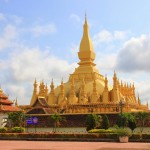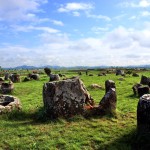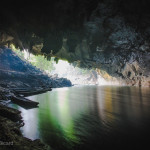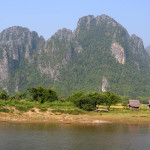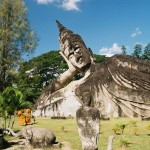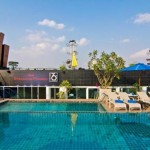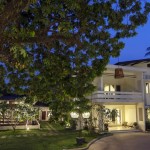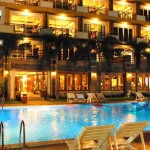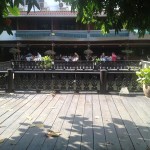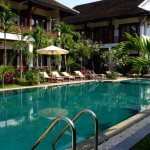Laos Geography
Lao People’s Democratic Republic (Lao PDR) is located in the heart of the Indochinese peninsular, in Southeast Asia, at a latitude of 14 to 23 degrees north and longitude 100 to 108 degrees east.
Lao PDR shares a 505 km border with China to the north, 435 km of border with Cambodia to the south, 2,069 km of border with Vietnam to the east, 1,835 km of border with Thailand to the west, and a 236 km border with Myanmar to the northwest. The country stretches 1,700 km from north to South, with an east-west width of over-500 km at its widest, and only 140 km at the narrowest point.
Lao PDR covers a total of 236,800 square kilometres, three-quarters of which is mountains and plateaux. The country has three distinct regions.
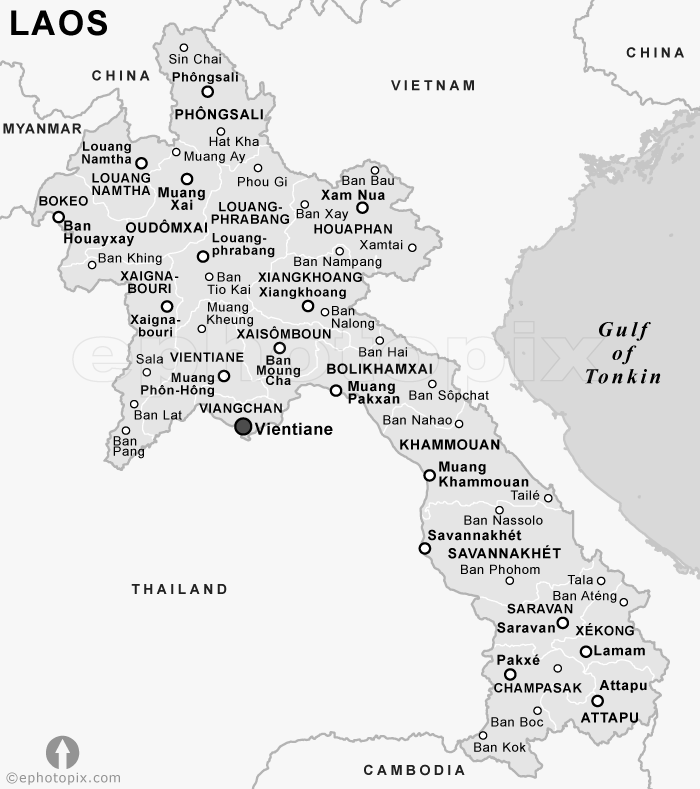
The north is dominated by mountains that average 1,500 metres above sea level. The highest peak is the 2,800 metre Phou Bia in Xieng Khouang province. The Phou Luang (Annamite Chain) stretches from the southeast of the Phouane Plateau down to the Cambodian border. It has three large plateaux: Phouane Plateau in Xieng Khouang province, Nakai Plateau in Khammouane province, and Boloven Plateau in southern Laos, 1,000 m above sea level.
The plains region comprises large and small plains along the Mekong River. The largest of these is the Vientiane Plain, on the lower reaches of the Nam Ngum River. Also significant are the Savannakhet plain, on the lower reaches of the Se Bang Fai and Se Bang Hieng rivers, and the Champassak plain, which is on the Mekong River, stretching between the Thai and Cambodian borders. Blessed with fertile soil, these plains represent one quarter of the total area and are the “granaries” of the country.
The Lao PDR is criss-crossed by many rivers and streams. The Mekong River flows through 1,835 km of the country from north to south. Rivers and streams provide great potential for hydropower development. Over half of the power potential in the lower Mekong Basin is contained within Laos.
The Nam Ou river flows from Phonsaly to Luang Prabang for 448 km; the Nam Ngum runs 354 km from Xieng Khouang to Vientiane province; the Se Bang Hieng of Savannakhet province is 338 km long; the Nam Tha runs from Luang Namtha to Bokeo for 325 km; the Nam Sekong runs 320 km from Saravane and Sekong to Attopeu province; the Se Bang Fai runs between Khammouane and Savannakhet for 239 km; Oudomsay province’s Nam Beng covers 215 km; the Nam Sedong flows for 192 km between Saravane and Champassak; the Nam Selanong in Savannakhet runs for 115 km; the Nam Kading of Borikhamsay province is 103 km long; the Nam Khanh runs for 90 km between Huaphanh and Luang Prabang.
Being a tropical country, the weather in Laos is influenced by monsoons. The weather in the mountains in the north and in the high range of the Annamite Chain bordering Vietnam in the east is semi-tropical. The difference in day and night temperatures is about 10 deg C.
Laos has around 2,300-2,400 hours of sunlight per year. The atmospheric humidity is usually 70-80%, and 75-90% of the precipitation is recorded in the rainy season, May to October. Rainfall in the dry season, November to April, accounts for only 10-25%. There is a sharp difference in rainfall between regions. For instance, in the Phou Luang (Annamite Chain), the annual average rainfall is around 300 millimetres. In Xieng Khouang, Luang Prabang and Sayaboury provinces, annual rainfall is 100-150 millimetres; in Vientiane and Savannakhet 150-200 millimetres of rainfalls every year.
Laos has an abundance of natural resources. Beneath the earth’s surface, the mineral deposits include tin, iron, coal, zinc, copper, gold, silver, sulphur and sapphires. Although mining is still in its infancy, surveys show that the quantity and density of mineral deposits are quite high. On the surface, the country has a wealth of forests, covering 47% of the surface. They comprise a variety of species, with many of high economic value such as Khagnoung, Khamphi, Dou, Eaglewood and Longleng.
The forest regions are also rich in non-timber products such as shellac, benzoin, cardamon, pine resin, rattan and medicinal plants, and there is a wide range of fauna, including elephants, tigers, bears, deer and a newly-discovered species of deer called Saola.
Such wealth represents a great potential for the development of the country, ensuring a brighter future and better living standards for its people.


